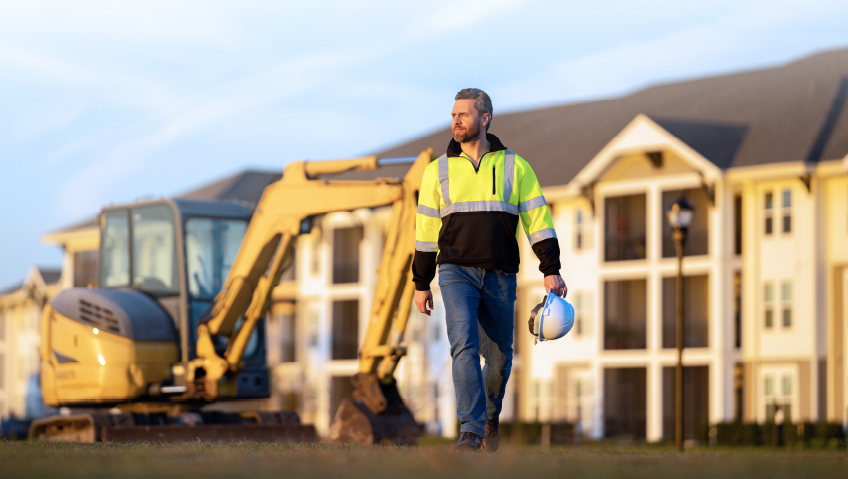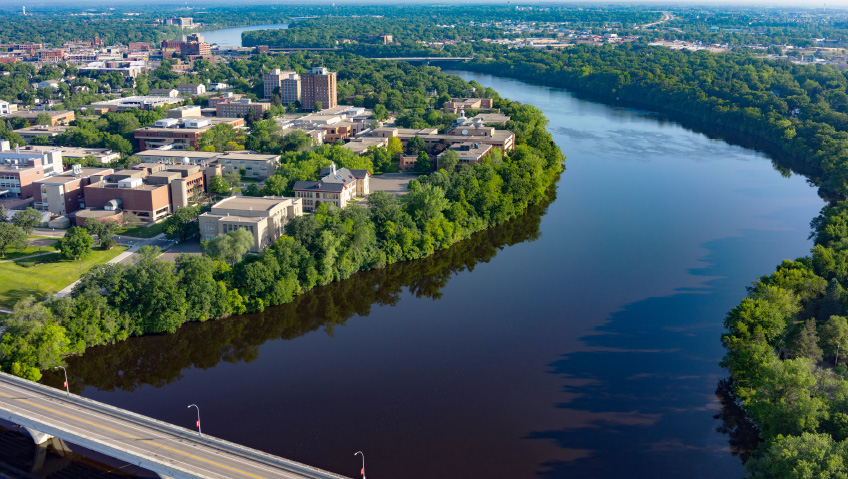The cities of Lebanon and Hanover are located in the Upper Connecticut River Valley region of central New Hampshire. With a combined population of roughly 27,000 people, the Upper Valley has a breadth of cultural and recreational activities to explore. The region offers incredible educational opportunities, and its medical technology industry is rapidly growing.
The businesses and communities in the two cities are seamlessly connected, and this led to a key change in the structure of these municipalities. Recently, Hanover and Lebanon merged their chambers to create the Upper Valley Business Alliance.
Discussions of merging the chambers of Hanover and Lebanon have been ongoing for years, though the timing was never quite right until late 2019. “It came up again, and I think that the climate in our region was such that we recognized that we have a regional economy, and it made more sense for the two organizations to combine forces and combine resources as well,” says Upper Valley Business Alliance Executive Director Tracy Hutchins.
“We have a saying: ‘We’re not your father’s chamber anymore,’” says Hanover Town Manager Julia Griffin. “As businesses have become more interconnected, regions have become more interconnected, and to keep pace with rapid changes that were happening in the business sector, we had to start thinking beyond the old model that always worked and be much more forward-thinking in terms of what support and services to provide to member businesses.”
The Upper Valley Business Alliance can provide a wider breadth of services now than it did as individual chambers. Its goal is to support the local economy and promote the Upper Valley as an ideal place to live and a great place to do business.
Demonstrating its commitment to economic development, one of its new initiatives is the Upper Valley MedTech Collaborative, supporting the medical technology industry, a segment of business that is rapidly growing in the Upper Valley. Many technology companies have moved into the Upper Valley because it is an excellent choice for businesses and families.
Upper Valley MedTech Collaborative Chair Greg Lange explains that the initiative was formed to bring together all the groups in the region that focus on medical technologies and medical innovation to encourage collaboration. “It takes a village to grow med-tech companies. It’s very hard to do it on their own, and we have this wealth of experience and expertise in the Upper Valley, so our goal is to make sure people know that we’re all here working on similar things and to connect people regularly. Over the last few years, we’ve identified fifty to sixty different med-tech entities that are all working on some kind of medical technology here in the Upper Valley.”
To connect these like-minded businesses, the collaborative hosts pitch nights and conferences and provides numerous opportunities for the community to learn about funding options such as reimbursement strategies. These opportunities help business owners understand how to manage their intellectual property as it is being developed.
Between the Thayer School of Engineering at Dartmouth, Dartmouth Medical School, and the Dartmouth Hitchcock Medical Center, the Upper Valley region has become a medical innovation hub. The Dartmouth Hitchcock Medical Center is the largest medical facility in northern New England, and the convergence of all three entities generates a significant amount of research through collaboration. The Upper Valley MedTech Collaborative strives to nurture and advance this growing part of the region’s economy.
To support the area’s growth, the Upper Valley Business Alliance also focuses on workforce and talent development. Some of its initiatives are legacy programs from the Hanover Chamber such as Meet Up Upper Valley, which has been ongoing for several years. This employee retention program involves some of the largest employers in the area. Many of the larger employers recruit from outside the region, and the program helps people who have relocated in feeling more at home in the communities of Lebanon and Hanover. Retention rates are much higher with newcomers when they have the opportunity to connect with new people, make friends, and set down roots.
As the Upper Valley Business Alliance was launched, it was approached by talent recruitment and human resources members from the Upper Valley Dual Career Network, a longstanding program in the area. The program was put together to address the workforce needs of the spouse or partner of a person who is relocating to the Upper Valley. It was a logical choice for this program to move under the umbrella of the Upper Valley Business Alliance, as it already has a robust system of business members who could provide services or employ the trailing spouse.
Another program that the Upper Valley Business Alliance has taken under its wing is the Young Professionals group. It was operating on its own for quite some time, but as can happen with volunteer organizations, the leadership roles changed, and this led to a lack of consistency for the program. Fortunately, the program is one more great fit for the Upper Valley Business Alliance and becomes another way to attract and retain good people in the area.
The rural Upper Valley region is well suited for growth and development for several reasons. Its convenient location at the intersection of two interstate highways puts it within easy reach of Boston, Montreal, and New York City. Its airport also has daily flights to Boston and New York, and it can take private jets as well.
Since the beginning of the pandemic, the region has seen an increase in its population as more people look to move away from urban areas. “We offer a remarkable quality of life here, and I think we just really have the best I think of everything, and we are seeing what some places are calling COVID refugees or climate refugees. More people are relocating to New Hampshire and Vermont, and they’re finding their way into our region,” explains Hutchins. The employers in the Upper Valley tend to pay higher wages compared to the rest of the state, and the unemployment rate is lower. The region’s resiliency through the pandemic has been extraordinary.
Lebanon was recently ranked the tenth city in the United States for in-migration numbers during the pandemic. Griffin says those who live there were not surprised by that ranking. “The benefits of being in a somewhat more rural but sophisticated area line up with the benefits of escaping more densely populated areas when you’re concerned about a virus like COVID. So, we’re now galloping to try and catch up with the desire of folks to perhaps find places to live on a long-term basis that feel a little bit safer than densely settled urban areas.”
One challenge that routinely comes with rapid economic growth is housing development. Finding affordable housing for everyone who wants to relocate to the Upper Valley is a struggle, and because there has been such high demand, housing prices have risen. Fortunately, Hanover and Lebanon have both been proactive municipalities in working towards building new housing with a commitment to sustainability, and the prices are now starting to level once again.
The future development of the Upper Valley depends on its ability to establish more housing. “We’ve got 1,400 residential units under construction or approved right now, which is very significant for a city of this size, where we’ve only got 7000 pieces of property,” says Lebanon City Manager Shaun Mulholland. “We’ve got more on the drawing board that are critical to addressing this problem to allow adequate space for people to live, and hopefully, that will drive some of the price down when those units become online.”
Sustainability in housing development is a priority for the Upper Valley. Hanover and Lebanon are partners on the renewable energy front and two of the leading communities in the state of New Hampshire that are moving aggressively towards a sustainable future. “I think the growth and development that we do here has an opportunity to be very sustainably focused, and quite frankly, the younger generation workforce is looking for that kind of housing,” says Griffin.
The Upper Valley is experiencing a lot of success in creating more supportive renewable infrastructure, including integrating public transportation with electric vehicles. “We have the opportunity to appeal to that segment of the next generation that’s looking for something that meets their desire to live in a greener environment, both literally and from a renewable energy perspective,” says Griffin.
This rural, sustainably-focused region is full of potential for people who value a close-knit, fun community as well as opportunities for education, business, and medical innovation.
“This is an amazing part of the country to be in, just in terms of the indoor/outdoor sports activities,” says Lange. “Also, you can’t underestimate the power of having an Ivy League college and a major academic medical center and what opportunities that brings for culture, affluence, and education.”






